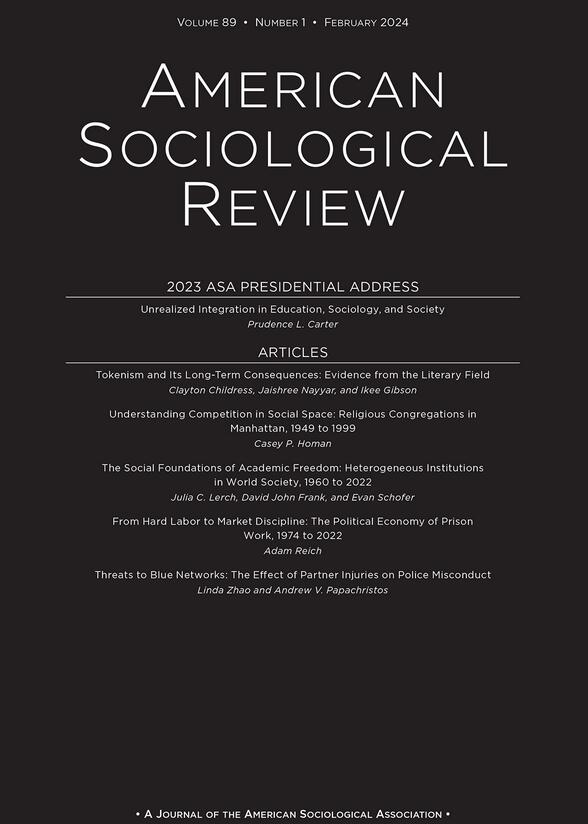性别工资差距真的是伪装的家庭工资差距吗?
IF 6.2
1区 社会学
Q1 SOCIOLOGY
引用次数: 0
摘要
尽管有大量关于性别和家庭工资差距(如母亲工资惩罚、父亲工资溢价和婚姻溢价)的文献,而且人们普遍认识到这两种差距是相互交织的,但对它们之间关系的程度和模式却缺乏探索。利用 2018 年收入与计划参与调查的数据,我们表明家庭工资差距与性别工资差距密切相关,这也是文献中长期假设的,但有重要的注意事项。养育子女的性别工资回报占性别工资差距的 29%。其中三分之一与职业有关,但与其他工人和工作属性关系不大。婚姻的性别差异回报占 33%,其中三分之二与工人和工作属性有关,但与职业关系不大。然而,36%的性别工资差距与这些家庭工资差距无关,无子女工人的性别工资差距仍然很大。此外,与白人工人相比,黑人和西班牙裔工人的关联模式更为复杂,且普遍较弱。这些结果提醒我们不要只关注 "母亲和其他人 "之间的工资差距,并提出了新的研究方向。本文章由计算机程序翻译,如有差异,请以英文原文为准。
Is the Gender Wage Gap Really a Family Wage Gap in Disguise?
Despite large literatures on gender and family wage gaps (e.g., the motherhood wage penalty, fatherhood wage premium, and the marriage premium) and widespread recognition that the two gaps are intertwined, the extent and pattern of their relationships are underexplored. Using data from the 2018 Survey of Income and Program Participation, we show that family wage gaps are strongly associated with the gender wage gap, as long assumed in the literature, but with important caveats. The gender-differentiated wage returns to parenthood contribute 29 percent of the gender wage gap. One third of this is associated with occupation, but very little with other worker and job attributes. The gender-differentiated returns to marriage contribute another 33 percent, two thirds of which is associated with worker and job attributes but very little with occupation. However, 36 percent of the gender wage gap is unrelated to these family wage gaps, and the gender wage gap among childless workers remains substantial. Moreover, for Black and Hispanic workers, the pattern of association is more complex and generally weaker than for White workers. These results caution against focusing solely on the wage gap between “mothers and others” and suggest new directions for research.
求助全文
通过发布文献求助,成功后即可免费获取论文全文。
去求助
来源期刊

American Sociological Review
SOCIOLOGY-
CiteScore
13.30
自引率
3.30%
发文量
35
期刊介绍:
The American Sociological Association (ASA) is a non-profit membership association established in 1905. Its mission is to advance sociology as a scientific discipline and profession that serves the public good. ASA is comprised of approximately 12,000 members including faculty members, researchers, practitioners, and students in the field of sociology. Roughly 20% of the members work in government, business, or non-profit organizations.
One of ASA's primary endeavors is the publication and dissemination of important sociological research. To this end, they founded the American Sociological Review (ASR) in 1936. ASR is the flagship journal of the association and publishes original works that are of general interest and contribute to the advancement of sociology. The journal seeks to publish new theoretical developments, research results that enhance our understanding of fundamental social processes, and significant methodological innovations. ASR welcomes submissions from all areas of sociology, placing an emphasis on exceptional quality.
Aside from ASR, ASA also publishes 14 professional journals and magazines. Additionally, they organize an annual meeting that attracts over 6,000 participants. ASA's membership consists of scholars, professionals, and students dedicated to the study and application of sociology in various domains of society.
 求助内容:
求助内容: 应助结果提醒方式:
应助结果提醒方式:


